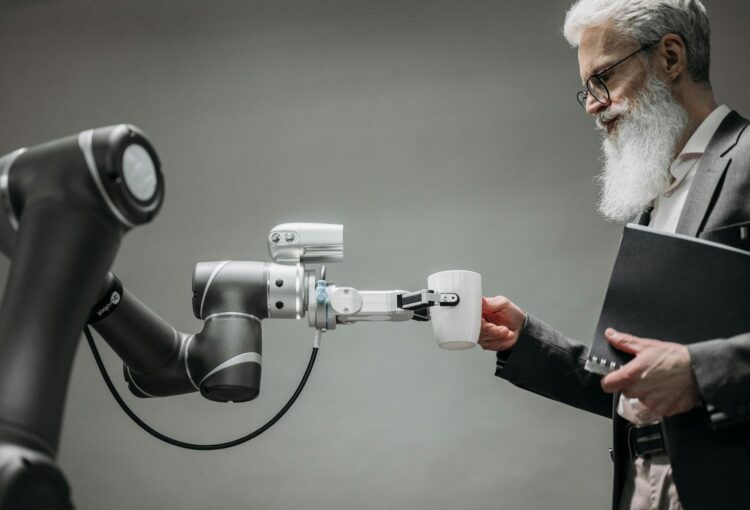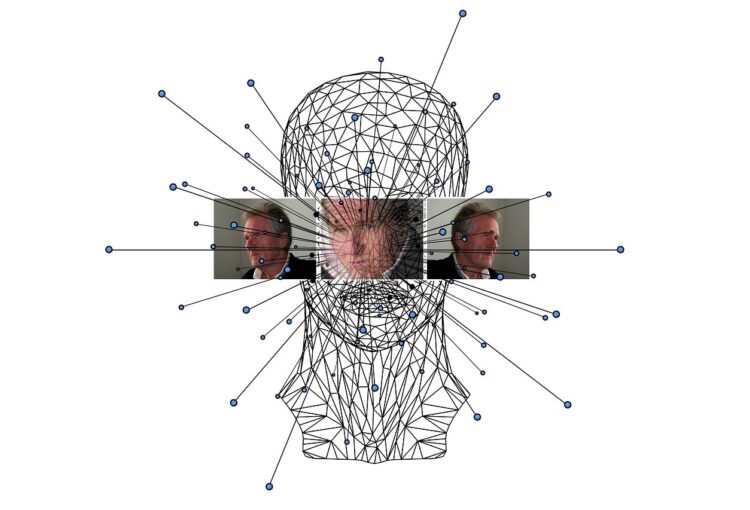
How AI and Machine Learning are Transforming Industries
Imagine a world where machines think, learn, and make decisions just like humans. It’s not science fiction anymore—it’s the reality of Artificial Intelligence (AI) and Machine Learning (ML). 🤖💡 These groundbreaking technologies are rapidly transforming industries across the globe, revolutionizing the way we work, live, and interact.
From healthcare to finance, manufacturing to entertainment, AI and ML are leaving no stone unturned. They’re enhancing efficiency, improving accuracy, and unlocking new possibilities that were once thought impossible. But what exactly are these technologies, and how are they reshaping our world? 🌎
In this blog post, we’ll dive deep into the fascinating realm of AI and Machine Learning. We’ll explore their fundamental concepts, examine the industries they’re revolutionizing, and uncover the myriad benefits they bring. We’ll also tackle the challenges of implementation and peek into the crystal ball to see what the future holds for these transformative technologies. Get ready to embark on a journey that will change the way you see the world of technology and its impact on our lives!
Understanding AI and Machine Learning
Defining AI and ML
Artificial Intelligence (AI) and Machine Learning (ML) are two interconnected but distinct concepts in the field of computer science. AI refers to the broader idea of creating intelligent machines that can simulate human-like thinking and decision-making processes. ML, on the other hand, is a subset of AI that focuses on the development of algorithms and statistical models that enable computer systems to improve their performance on a specific task through experience.
Key differences between AI and ML
To better understand the distinctions between AI and ML, let’s compare their key characteristics:
| Aspect | Artificial Intelligence | Machine Learning |
| Scope | Broader concept encompassing various approaches | Specific subset of AI |
| Goal | Create intelligent machines that mimic human cognition | Develop algorithms that learn from data |
| Functionality | Can make decisions, solve problems, and adapt | Focuses on pattern recognition and prediction |
| Implementation | Can include rule-based systems and expert systems | Relies on statistical models and data-driven approaches |
| Human intervention | May require ongoing human input and programming | Can operate with minimal human intervention once trained |
How they work together
AI and ML are complementary technologies that work in tandem to create powerful, intelligent systems. Here’s how they collaborate:
- AI provides the overarching framework and goals for intelligent systems
- ML acts as a tool within AI to process and learn from large datasets
- AI uses ML algorithms to improve its decision-making capabilities
- ML continuously refines AI models by adapting to new data and experiences
This synergy between AI and ML enables the development of sophisticated systems that can:
- Analyze complex data patterns
- Make accurate predictions
- Automate decision-making processes
- Enhance problem-solving capabilities
As we delve deeper into the impact of these technologies, we’ll explore how various industries are being revolutionized by the integration of AI and ML.

Industries Revolutionized by AI and ML
AI and machine learning are transforming various sectors, revolutionizing processes and enhancing efficiency. Let’s explore how these technologies are making significant impacts in key industries.
A. Healthcare: Improving diagnostics and patient care
AI and ML are revolutionizing healthcare by enhancing diagnostic accuracy and personalizing patient care. Some key applications include:
- Medical imaging analysis
- Predictive analytics for disease prevention
- Personalized treatment plans
- Drug discovery and development
| Application | Benefits |
| Medical imaging | Faster and more accurate diagnosis |
| Predictive analytics | Early disease detection and prevention |
| Personalized treatment | Improved patient outcomes |
| Drug discovery | Accelerated development of new medications |
B. Finance: Enhancing fraud detection and risk assessment
The financial sector has embraced AI and ML to improve security and decision-making processes:
- Real-time fraud detection
- Credit risk assessment
- Algorithmic trading
- Personalized financial advice
C. Manufacturing: Optimizing production and predictive maintenance
AI and ML are transforming manufacturing by:
- Optimizing supply chain management
- Implementing predictive maintenance
- Enhancing quality control
- Automating production processes
| Area | AI/ML Impact |
| Supply chain | Improved inventory management and logistics |
| Maintenance | Reduced downtime and equipment failures |
| Quality control | Enhanced product consistency and reduced defects |
| Production | Increased efficiency and reduced costs |
D. Retail: Personalizing customer experiences
The retail industry is leveraging AI and ML to create more engaging and personalized shopping experiences:
- Recommendation systems
- Dynamic pricing
- Inventory management
- Customer service chatbots
These technologies are helping retailers understand customer preferences, optimize pricing strategies, and streamline operations.
Now that we’ve explored how AI and ML are transforming various industries, let’s examine the benefits of integrating these technologies into business operations.

Benefits of AI and ML Integration
Now that we’ve explored the industries transformed by AI and Machine Learning, let’s delve into the significant benefits these technologies bring when integrated into various sectors.
A. Increased efficiency and productivity
AI and ML technologies are revolutionizing workflow processes, leading to substantial improvements in efficiency and productivity. By automating routine tasks, these technologies free up human resources to focus on more complex, value-added activities.
- Automation of repetitive tasks
- Real-time data processing
- 24/7 operation capabilities
B. Enhanced decision-making processes
Machine Learning algorithms can analyze vast amounts of data quickly and accurately, providing insights that enhance decision-making processes across all levels of an organization.
| Decision-Making Aspect | AI/ML Contribution |
| Speed | Rapid analysis of complex data sets |
| Accuracy | Reduced human error in data interpretation |
| Predictive power | Forecasting based on historical trends |
C. Cost reduction and resource optimization
By streamlining operations and optimizing resource allocation, AI and ML integration can lead to significant cost savings for businesses.
- Predictive maintenance to reduce downtime
- Optimized inventory management
- Energy consumption optimization
D. Improved customer satisfaction
AI-powered tools, such as chatbots and personalized recommendation systems, are enhancing customer experiences across various industries.
- 24/7 customer support availability
- Personalized product recommendations
- Faster query resolution times
With these benefits in mind, it’s clear that AI and ML integration offers substantial advantages to businesses. However, implementing these technologies also comes with its own set of challenges, which we’ll explore in the next section.

Challenges in Implementing AI and ML
As industries eagerly embrace AI and machine learning, they encounter several significant hurdles. Let’s explore the key challenges organizations face when implementing these transformative technologies.
A. Data quality and availability
The foundation of any successful AI or ML project is high-quality, abundant data. However, many organizations struggle with:
- Insufficient data volume
- Poor data quality (e.g., inconsistent, incomplete, or inaccurate data)
- Data silos across departments
- Privacy concerns limiting data access
To address these issues, companies must invest in robust data management strategies and tools.
B. Ethical considerations and bias
AI systems are only as unbiased as the data they’re trained on. Ethical challenges include:
- Algorithmic bias leading to unfair decisions
- Privacy concerns and data protection
- Lack of transparency in AI decision-making processes
Organizations must prioritize ethical AI development and implement safeguards to mitigate these risks.
C. Skill gap and workforce adaptation
The rapid advancement of AI and ML technologies has created a significant skills gap. Companies face challenges such as:
- Shortage of AI and ML specialists
- Difficulty in upskilling existing employees
- Resistance to change from staff fearing job displacement
To overcome this, organizations should invest in training programs and foster a culture of continuous learning.
D. Integration with existing systems
Implementing AI and ML solutions often requires integrating them with legacy systems, which can be complex and time-consuming. Challenges include:
- Compatibility issues with existing infrastructure
- Need for extensive system modifications
- Potential disruption to ongoing operations
A phased approach and careful planning can help mitigate these integration challenges.
| Challenge | Impact | Potential Solution |
| Data quality | Inaccurate AI predictions | Implement data governance policies |
| Ethical concerns | Reputational damage | Develop ethical AI guidelines |
| Skill gap | Slow adoption of AI/ML | Invest in employee training programs |
| Integration issues | Operational disruptions | Adopt a phased implementation approach |
As we navigate these challenges, it’s crucial to remember that the benefits of AI and ML often outweigh the difficulties. In the next section, we’ll explore the exciting future trends in AI and ML that promise to further revolutionize industries.

Future Trends in AI and ML
As AI and machine learning continue to evolve, several exciting trends are shaping the future of these technologies. Let’s explore some of the most promising developments on the horizon.
Explainable AI for increased transparency
Explainable AI (XAI) is gaining traction as organizations seek to demystify the decision-making processes of AI systems. This trend addresses the “black box” problem, making AI more transparent and accountable.
- Benefits of XAI:
- Improved trust in AI systems
- Enhanced regulatory compliance
- Better decision-making insights
Edge AI for faster processing
Edge AI brings computational power closer to the data source, enabling faster processing and reduced latency. This trend is particularly crucial for applications requiring real-time decision-making.
| Edge AI Applications | Benefits |
| Autonomous vehicles | Faster response times |
| IoT devices | Reduced bandwidth usage |
| Smartphone AI | Enhanced privacy |
AI-powered cybersecurity
As cyber threats become more sophisticated, AI is playing a critical role in bolstering cybersecurity measures. Machine learning algorithms can detect anomalies and potential threats in real-time, providing a proactive approach to security.
Key areas of AI in cybersecurity:
- Threat detection and prevention
- Automated incident response
- User behavior analysis
Quantum machine learning
The intersection of quantum computing and machine learning promises to revolutionize the field, potentially solving complex problems that are currently intractable for classical computers.
- Potential applications:
- Drug discovery
- Financial modeling
- Climate change prediction
As we look to the future, these trends highlight the continuing evolution of AI and machine learning, promising even greater transformations across industries and society as a whole.

AI and Machine Learning are reshaping industries across the board, from healthcare to finance, manufacturing to retail. These technologies are not just improving efficiency and productivity; they’re enabling entirely new business models and revolutionizing how companies interact with their customers. The benefits of AI and ML integration are substantial, including enhanced decision-making, personalized customer experiences, and predictive maintenance capabilities.
However, implementing AI and ML is not without its challenges. Organizations must navigate issues such as data privacy concerns, the need for skilled professionals, and the integration of new technologies with existing systems. As we look to the future, the potential of AI and ML continues to expand, with emerging trends like edge computing and quantum machine learning promising even greater transformations. Businesses that embrace these technologies now will be well-positioned to lead in their industries and capitalize on the immense opportunities that lie ahead.
